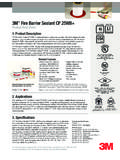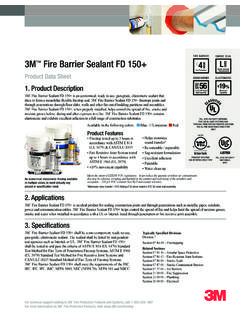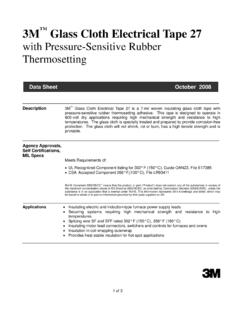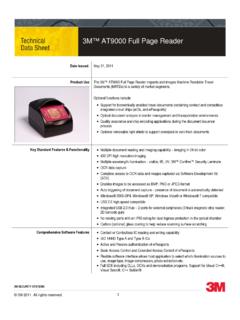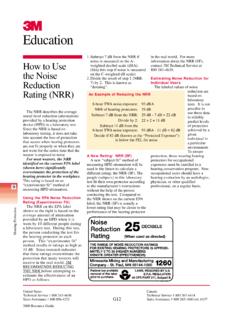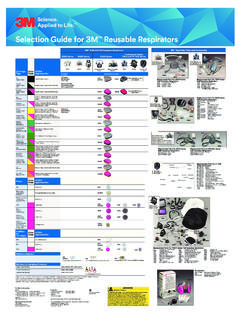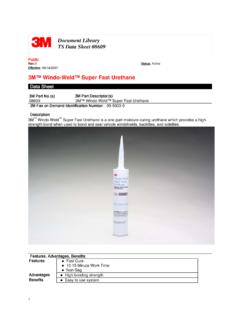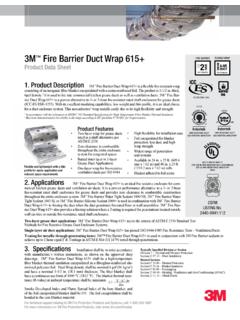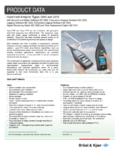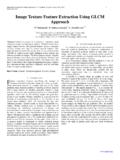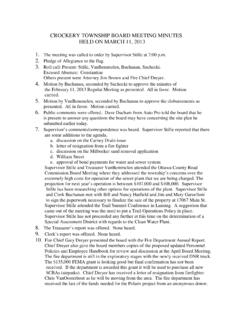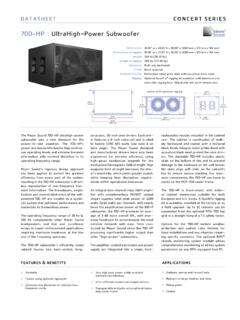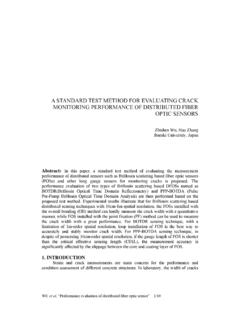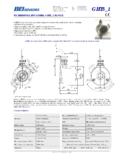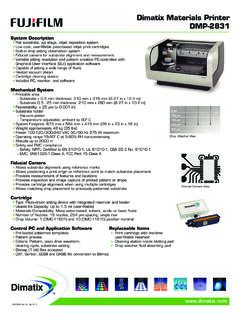Transcription of 3M™ Dynatel™ Advanced Cable Locator 2250
1 August 201478-8097-6518-9 Rev D3M dynatel Advanced Cable Locator 22503 MTable of ConTenTsIntroduction ..2 Installing or Replacing the Batteries ..2 Initial Receiver Configuration ..3 Receiver Battery Test ..3 Transmitter Battery Test ..4 Using External DC Power ..4 Locating a Buried Cable ..5 Transmitter Setup ..5 Direct Connect Method ..6 3M Dyna-Coupler Method ..8 Induction Method ..9 Receiver Setup ..10 About Trace Modes ..11 Selecting Passive Power Frequencies.
2 12 Selecting Auxiliary Frequencies ..12 Determining Cable Depth and Current ..13 Using Current Indications During Locating ..14 Locating an Active Duct Probe (ADP) ..15 Determining ADP Depth ..15 Toning Aerial Faults ..16 Transmitter Setup ..16 Receiver Setup ..16 Cable or Pair Identification ..17 Transmitter Setup ..17 Cable Identification Receiver Setup ..17 Pair Identification Receiver Setup ..18 Optional Accessories ..19 Technical Information ..20 Page 1 InTroduCTIonThe 3M dynatel Advanced Cable Locator 2250 consists of a Transmit-ter and a Receiver for locating buried cables or Active Duct Probes (sondes).
3 It also measures and pinpoints conductor faults in aerial cables. The Transmitter provides four frequencies to accommodate varying factors such as distance, Cable type, or soil conditions. If desired, all four frequencies may be transmitted at once. The Transmitter also provides a separate Tone function for identifying cables and pairs. The Receiver provides four locat-ing modes to accomplish fast or difficult tracing and to pinpoint or verify a buried Cable . The Receiver detects 50 or 60 Hz AC Power signals and also measures the signal current in a Cable and displays its magnitude.
4 The depth of buried cables or sondes may also be : For more detailed locating instructions and Advanced locating techniques, ask your 3M sales representative or call 800/200-0265 for a free publication called Cable and Pipe Locating or rePlaCIng The baTTerIes Battery Disposal: Since regulations vary, consult applicable regulations or authorities before 'C' cells6 'aa' cellsCautioN! Do not connect batteries improperly, charge or dispose of in fire. Batteries may leak or explode and cause personal injury.
5 Always remove batteries when storing the 2 InITIal reCeIver ConfIguraTIonDisplay depth units (inches, feet and inches, or centimeters) may be changed while holding and pressing . For each press, one of three units will display. To change the passive Power frequency, press and hold then press to toggle between 50 or 60 Hz as displayed in the lower left corner of the change the Null bar graph display mode, press and hold then press to toggle between normal Null bar graph display (Null flag will flash) and inverse Null bar graph display (Null flag is solid).
6 See section About Trace Modes (Page 11) for further 3reCeIver baTTery TesT The Receiver batteries are tested for two seconds every time the unit is turned on. The time interval can be extended by pressing and holding . During the battery test, the bar graph should extend to the right of the battery level mark, otherwise replace the : When batteries are low, the battery test indicator will Test Indicatorbattery level MarkTransMITTer baTTery TesTTo test the Batteries, press and hold . Listen to the tone and watch the display.
7 Solid tone and 'OK' indicates batteries good; beeping tone and 'LO' indicates batteries low; no tone and '- -' indicates replace batteries. Note: The battery test indicates battery condition for normal output levels. If the unit resets when the high output level is selected, use the normal out-put level or replace the exTernal dC Power and 5 waTT ouTPuTIf the unit has the option A, the Transmitter can be operated from an external 12 VDC source as well as its internal batteries. Use the supplied cigarette lighter adapter Cable to connect the DC power from a vehicle's battery source to the Transmitter's external power jack located next to the output jack.
8 Note: The internal batteries will not be recharged with external DC. 5 Watt outputAn external DC source is required for 5 watt output. To select 5 watt oper-ation, press once for high output (3W) and again for 5 watt operation. The High Output flag will turn on for 3W and flash for 4loCaTIng a burIed CableTransmitter setupPerform a battery test and then connect the Transmitter using one of the three methods below to put tracing signal on a : Key descriptions can be found inside the Transmitter lid.
9 DaNger!Voltage greater than 240 volts will damage equipment and cause personal injury and death. Make all direct test connections before turning on the Transmitter. Then activate the Transmitter in the Ohms mode and check the display for voltage readings. Follow standard procedures for reducing the !Potential for electrical shock exists when handling connecting cables while the Transmitter is in the TRACE, FAULT or TONE modes. Turn the Transmitter off before handling connecting 5 Make sure the Transmitter is off.
10 Plug the direct connect Cable into the front panel jack. Connect the Black clip to the ground rod. Place the ground rod in the earth perpendicular to the suspected Cable path. If necessary, extend the black lead with the Ground Extension Cable . Next, remove the ground bonding and attach the Red clip to the to turn the Transmitter on in the Ohms mode . It will mea-sure the continuity of the Cable under test. The results are displayed in ohms and as a tone (solid tone = good ground; beeping tone = usable ground; no tone = poor or no ground).
